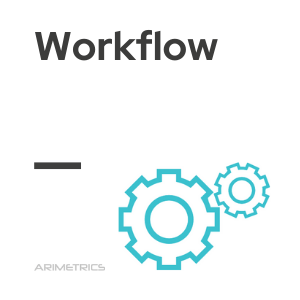
Definition:
The workflow is defined as the automation of the tasks of a company, so that they are properly hierarchical, organized and automated. It is mainly used in companies that apply technology in daily processes and involves the connection of workers with all business processes.
In online marketing,the workflow is a fundamental tool to implement the lead nurturing strategy within the inbound marketing actions. The objective is for the user to remain active throughout the sales funnel process and accompany him in his progress until culminating in the desired conversion.
Minimum requirements for a digital marketing workflow
The structure of a workflow can vary greatly depending on the objectives and the application we use, but it has two common points.
- First of all, there must be an initial action with which the relationship between the client and the company begins: a registration by form, a visit to the website, etc.
- From the previous premise, the actions with which you want to relate to that client are defined and automated. We refer, for example, to the sending of an e-mail with a discount, an SMS or the personalization of the shipments.
How a workflow works in digital marketing
The biggest advantage of creating a workflow in digital marketing is that it facilitates in the extreme the objective of reaching the potential customer or retaining the existing one with personalized and directed information at each specific moment (eg: a discount for their birthday).
In order to implement this action correctly, it is necessary to precisely define our buyer persona.
It is a very valuable strategy that consists of creating prototypes of customers through the information we have and then impacting them with the messages that best suits their interests, habits, etc.
Advantages of a workflow
The possibility of automating digital marketing actions with the advanced tools available in the sector allows to greatly streamline the entire work process of a company. We could summarize the advantages of working with workflows in the following :
- It allows you to implement complex marketing processes with maximum efficiency.
- Boost the conversion capacity within a campaign. According to a study by the agencies Lenskold Group and Pedowitz, 60% of respondents claimed to have converted their leads tosales thanks to the use of marketing automation.
- It entails a saving of time and, therefore, of costs.
- Personalized content creates a stronger bond between the company and the potential customer, who feels respected and, in a way, important in the process of buying a company.
- The automation of the actions facilitates the measurement of the impact of each action and a greater control of them.
The best tools to workflow in digital marketing
In the market there is an important variety of software to automate tasks and facilitate inbound marketing processes. If we focus on the realization of workflows, the three most used tools are the following:
- Hubspot. It provides a free CRM that automatically records customer interactions (e-mails, calls, likes, etc.). Lead nurturing actions are included in your payment services.
- Marketo. Similar to Hubspot, it allows the automation of the main tasks, although its price is higher.
- Workflow
. Apple has appropriated the most intuitive name in its iOS app. Its download is free and, unlike the previous ones, it is aimed above all at the private user.
